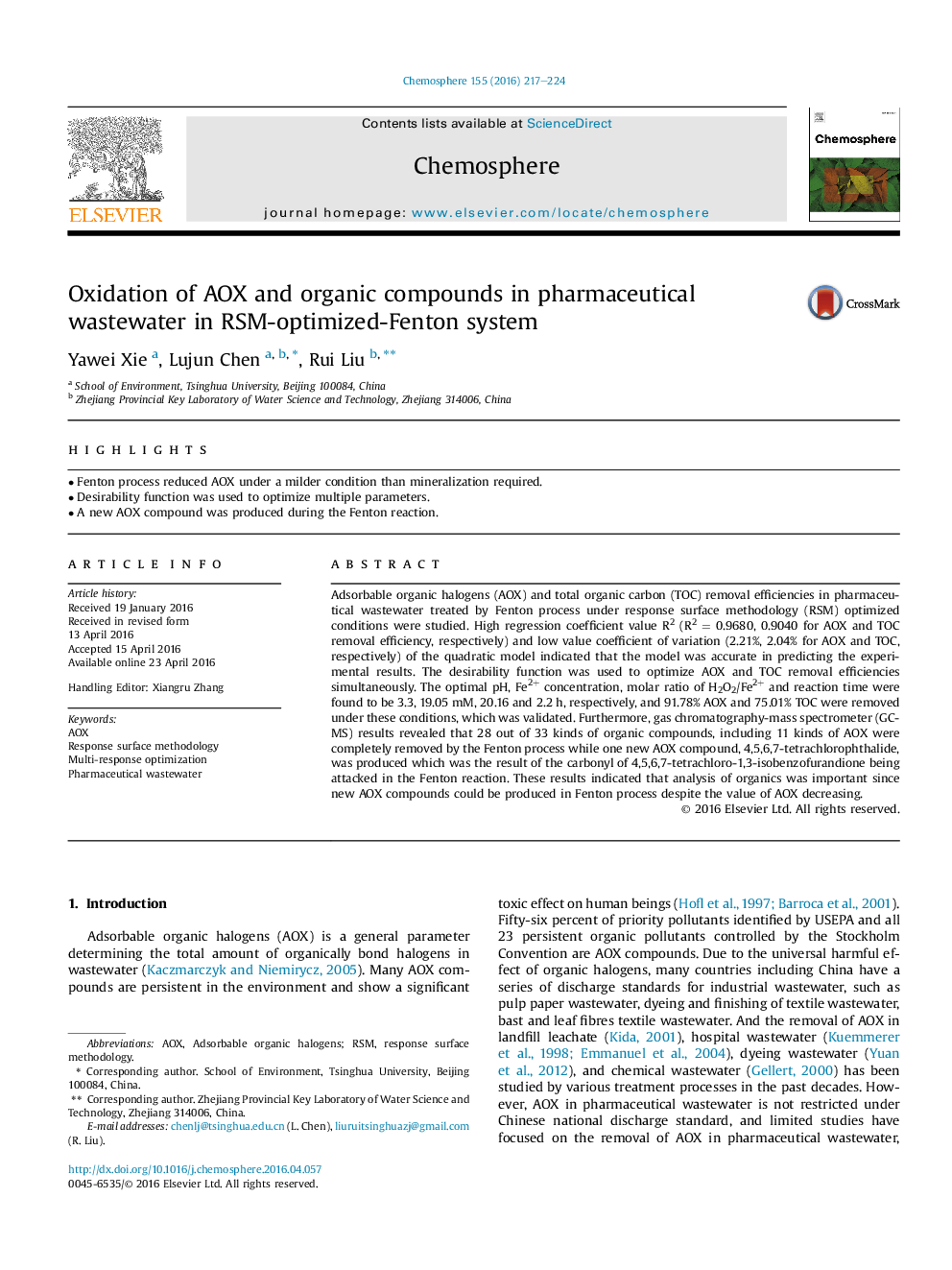| کد مقاله | کد نشریه | سال انتشار | مقاله انگلیسی | نسخه تمام متن |
|---|---|---|---|---|
| 4407547 | 1618816 | 2016 | 8 صفحه PDF | دانلود رایگان |

• Fenton process reduced AOX under a milder condition than mineralization required.
• Desirability function was used to optimize multiple parameters.
• A new AOX compound was produced during the Fenton reaction.
Adsorbable organic halogens (AOX) and total organic carbon (TOC) removal efficiencies in pharmaceutical wastewater treated by Fenton process under response surface methodology (RSM) optimized conditions were studied. High regression coefficient value R2 (R2 = 0.9680, 0.9040 for AOX and TOC removal efficiency, respectively) and low value coefficient of variation (2.21%, 2.04% for AOX and TOC, respectively) of the quadratic model indicated that the model was accurate in predicting the experimental results. The desirability function was used to optimize AOX and TOC removal efficiencies simultaneously. The optimal pH, Fe2+ concentration, molar ratio of H2O2/Fe2+ and reaction time were found to be 3.3, 19.05 mM, 20.16 and 2.2 h, respectively, and 91.78% AOX and 75.01% TOC were removed under these conditions, which was validated. Furthermore, gas chromatography-mass spectrometer (GC-MS) results revealed that 28 out of 33 kinds of organic compounds, including 11 kinds of AOX were completely removed by the Fenton process while one new AOX compound, 4,5,6,7-tetrachlorophthalide, was produced which was the result of the carbonyl of 4,5,6,7-tetrachloro-1,3-isobenzofurandione being attacked in the Fenton reaction. These results indicated that analysis of organics was important since new AOX compounds could be produced in Fenton process despite the value of AOX decreasing.
Journal: Chemosphere - Volume 155, July 2016, Pages 217–224